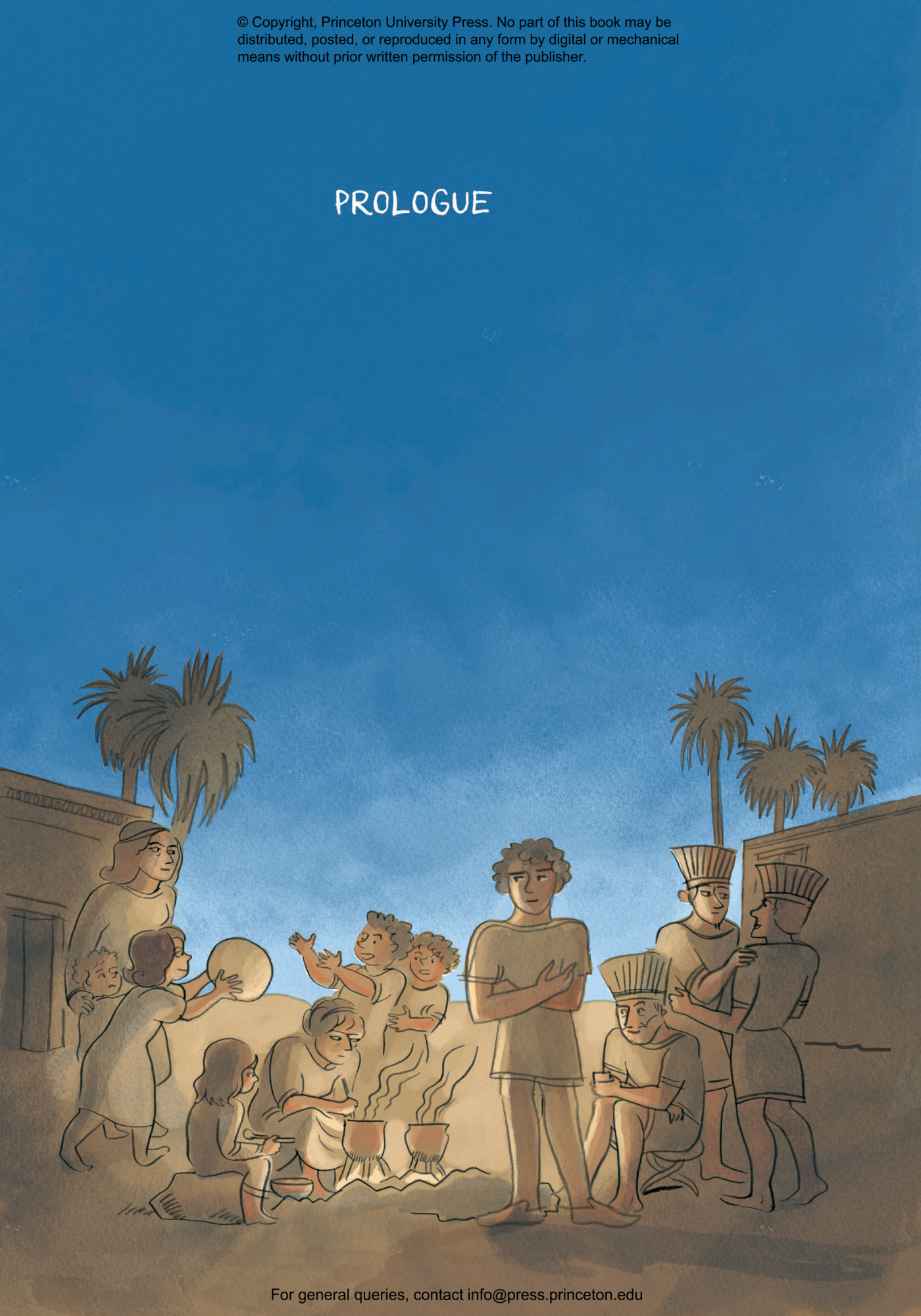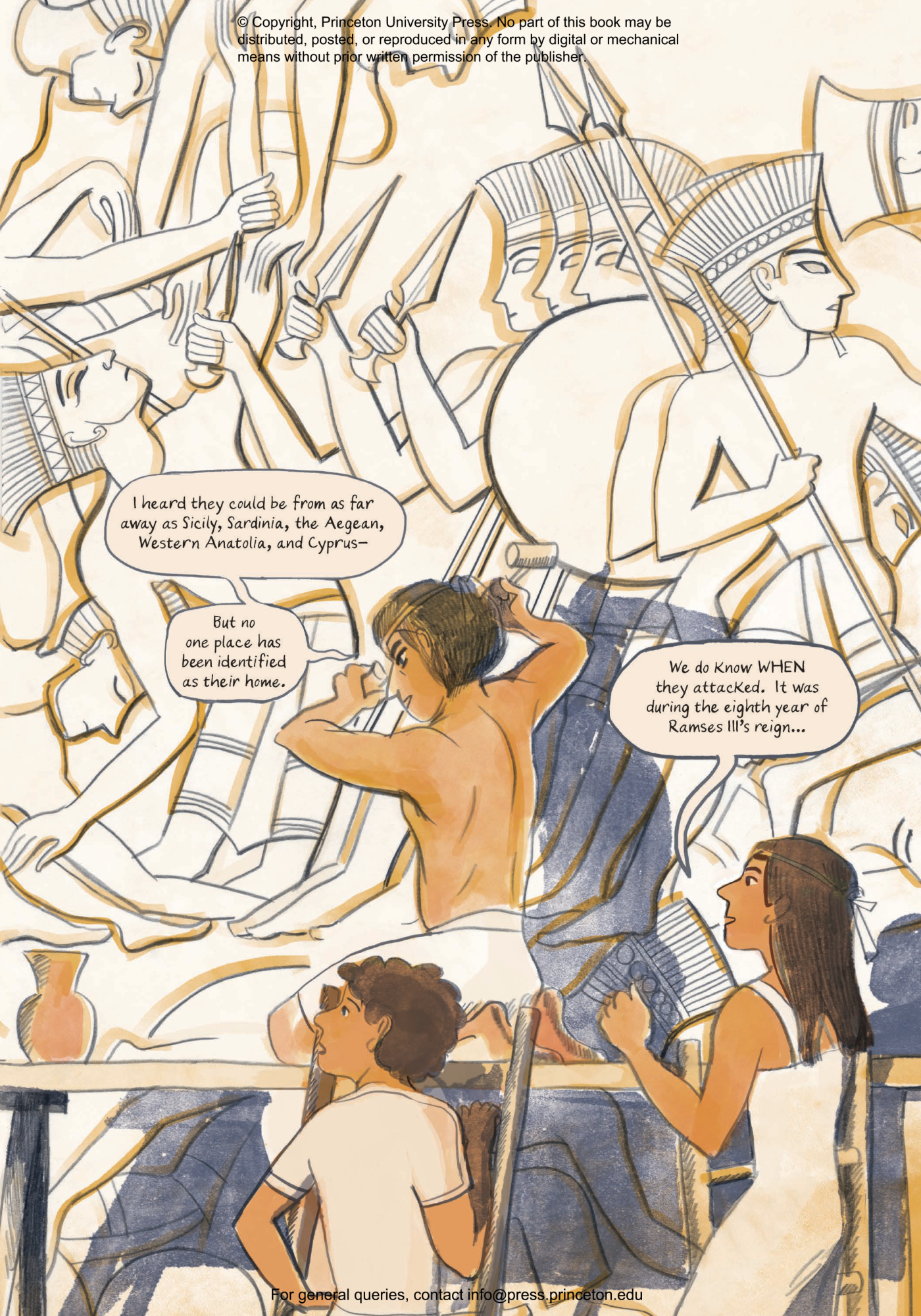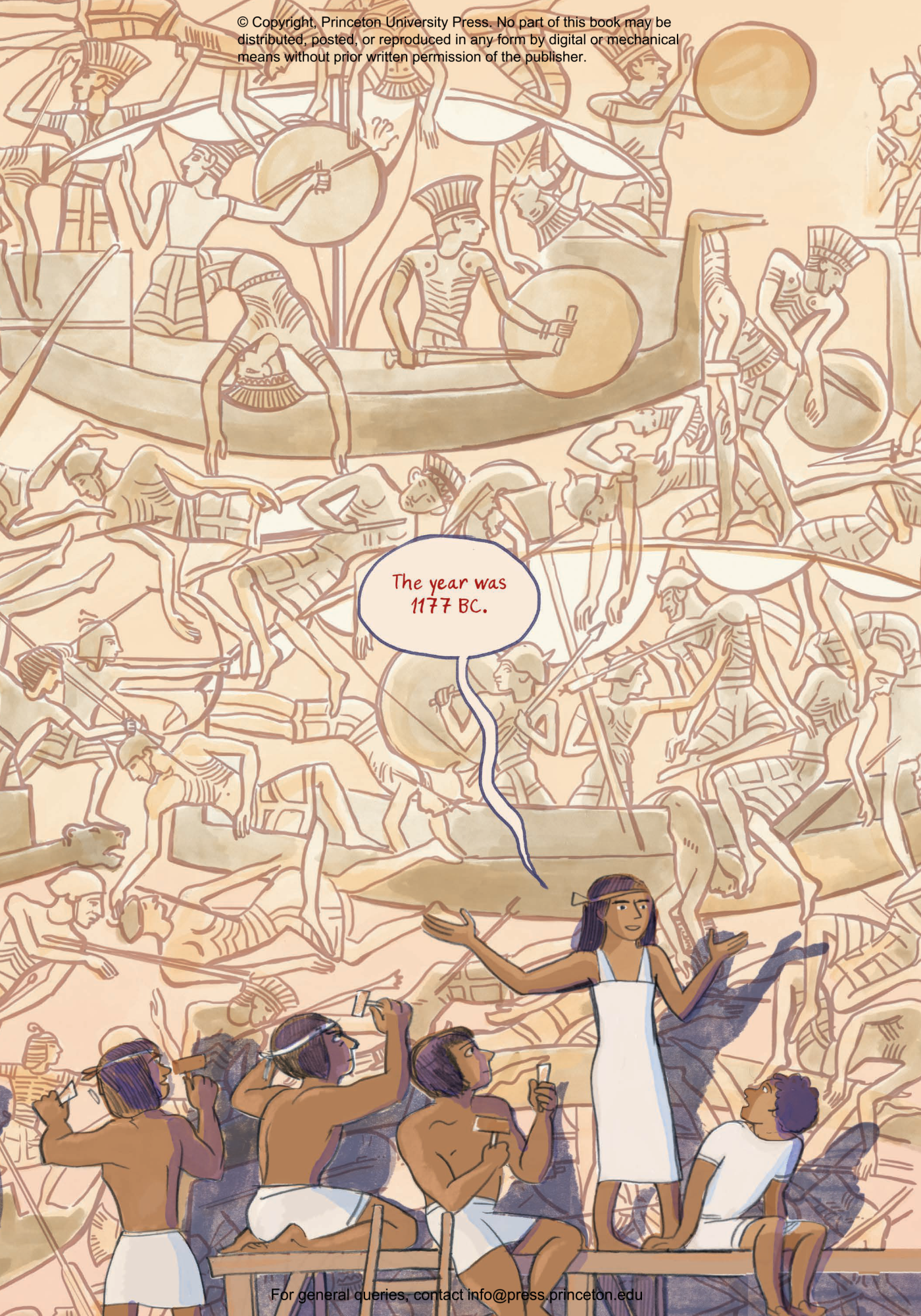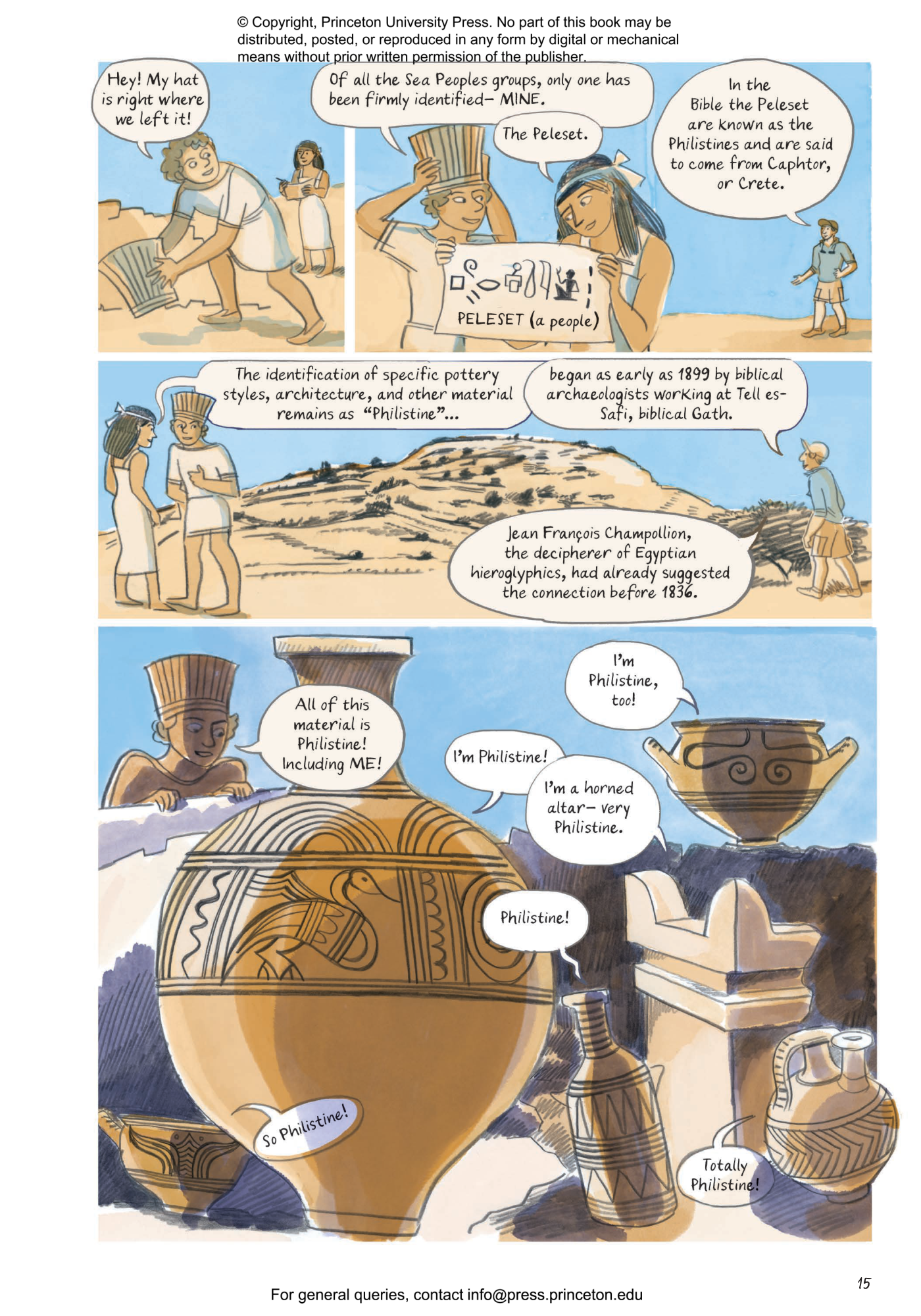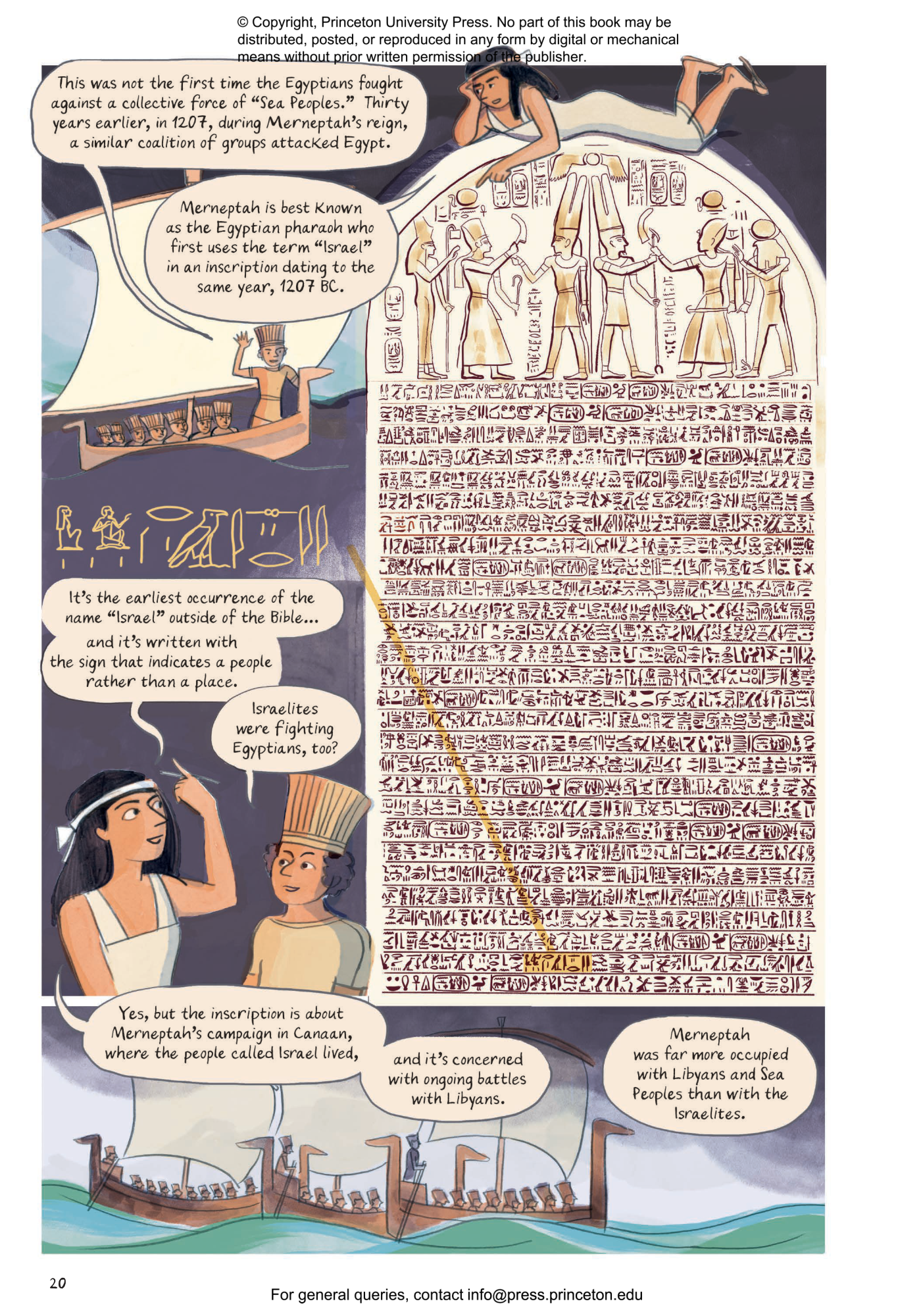Eric Cline’s 1177 B.C. tells the story of one of history’s greatest mysteries: what caused the ancient civilizations of the Aegean and Eastern Mediterranean to collapse more than three thousand years ago, bringing the Late Bronze Age to an abrupt end? In this vivid and captivating full-color graphic adaptation of the landmark book, author-illustrator Glynnis Fawkes invites us to follow two young friends living in the aftermath of the cataclysm as they unravel why it happened—and reveal important lessons for today’s interconnected and vulnerable world.
Pel, a member of the marauding Sea Peoples, and Shesha, an Egyptian scribe, visit the kingdoms of the Minoans, Mycenaeans, Hittites, Canaanites, Assyrians, and Egyptians to explore the calamities that brought them down. This graphic history depicts the people, events, art, architecture, and lands that Pel and Shesha encounter. We witness the Sea Peoples’ battles on land and sea, earthquakes on the Greek mainland, droughts and famine in Anatolia, invasions in north Syria, and possible rebellions in Canaan. Along the way, we also learn about the assassination of a Hittite prince traveling to marry an Egyptian queen, the sinking of a merchant ship laden with international goods, and the return of a pair of sandals to Crete by the Babylonian king Hammurabi.
An entertaining adventure story, this dazzling comic is also historically accurate and enlightening, inviting readers of all ages to think about the surprising factors and theories that explain why societies, whether ancient or modern, die or survive when struck by catastrophes.
Eric H. Cline is professor of classics and anthropology at George Washington University. His many books include 1177 B.C.: The Year Civilization Collapsed and After 1177 B.C.: The Survival of Civilizations (both Princeton). Glynnis Fawkes is the author-illustrator of Charlotte Brontë before Jane Eyre and Persephone’s Garden, among other books, and her comics have appeared on the website of The New Yorker. She has worked as an archaeological illustrator around the Aegean and Eastern Mediterranean, and teaches at the Center for Cartoon Studies in Vermont.
"This playful graphic adaptation of historian Cline’s study of the late Bronze Age employs cheerful art by Fawkes (Charlotte Brontë Before Jane Eyre) to bring archaeological scholarship to life. . . . The graphic format allows readers to envision the ancient world, as Fawkes fills the pages with meticulously researched drawings of cities, people, art, food, and fashion. Her loose, colorful picture-book art is welcoming to all ages. This ambitious and detailed visual history rewards multiple readings."—Publishers Weekly
"Bold, intriguing, and imaginative. . . . [A] clever mix of fact and ‘fun,’ enlivened by [Fawkes's] graphic reimagining of the Bronze Age world."—David Stuttard, Classics for All
"1177 B.C. [A Graphic History of the Year Civilization Collapsed] uses the graphic novel format in ingeniously inventive ways to present the complicated history of the end of the Bronze Age. . . . An astonishing amount of information is packed into these pages, drawing on a vast range of sources, from inscriptions to archeological evidence to literature, including the Iliad and the Bible. . . . Together, the words and pictures show how history is made."—Marissa Moss, New York Journal of Books
"The illustrations are compelling – well-conceived and constructed."—Chris Gosden, Times Literary Supplement
“The collapse of Bronze Age civilization is one of the most crucial and complex events in human history. By guiding us through the maze of theories with intellectual clout and charming, humorous graphic art, Cline and Fawkes have pioneered a dazzling new way of bringing archaeology and ancient history to readers of all ages.”—Edith Hall, author of Aristotle’s Way: How Ancient Wisdom Can Change Your Life
“This funny, beautiful book is a tour de force of visual storytelling. Glynnis Fawkes’s stunning graphic rendition of 1177 B.C. amplifies Eric Cline’s landmark work without simplifying the historical questions that remain. From the mysterious Sea Peoples to garrulous hippos, the Late Bronze Age comes alive on the page.”—Josephine Quinn, author of How the World Made the West: A 4,000-Year History





